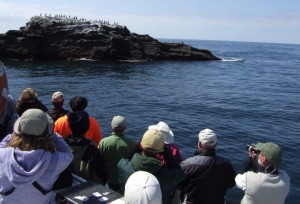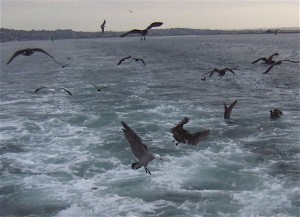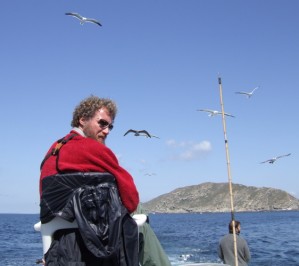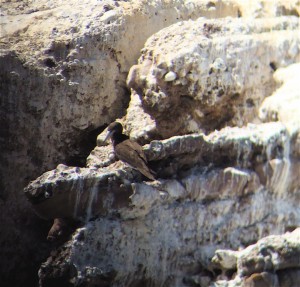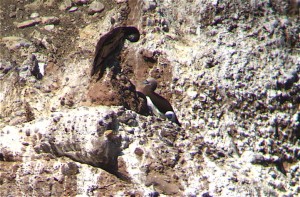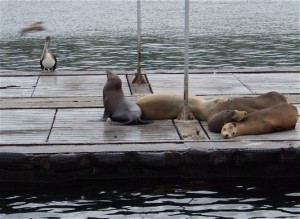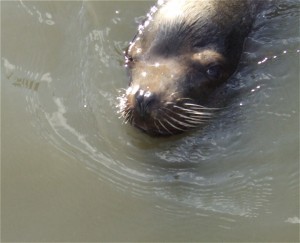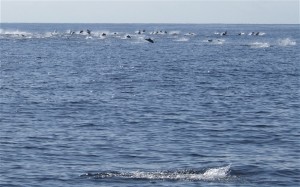 I've kind of hesitated blogging this for a few reasons. One being that whenever the ivory-billed woodpecker is mentioned in a blog post (mine or other blogs), it brings out arguments. You can't even bring it up without someone launching into some off beat augment, sometimes it isn't even about whether the bird is alive or not and I just don't like dealing with that. The other thing is that I'm kind of torn on the whole movie. I like all the people involved and I worry no matter what I blog about, someone involved is not going to like it.
I've kind of hesitated blogging this for a few reasons. One being that whenever the ivory-billed woodpecker is mentioned in a blog post (mine or other blogs), it brings out arguments. You can't even bring it up without someone launching into some off beat augment, sometimes it isn't even about whether the bird is alive or not and I just don't like dealing with that. The other thing is that I'm kind of torn on the whole movie. I like all the people involved and I worry no matter what I blog about, someone involved is not going to like it.
However, I just got an email notice that there is a new Bird Watch Radio podcast and it features The Ghost Bird Movie. I look forward to listening to it.
So, here it goes.
 Sometimes I have moments when I ask myself, "How the heck did I end up here?" Above is one of those moments. This is a picture I took during the San Diego Bird Festival when there was a preview screening of the Ghost Bird movie. Afterwards there was a panel discussion with David Sibley (dude with the mic), Scott Crocker, the filmmaker (the dude in the middle) and a surprise appearance by Dr. Jerry Jackson (who said I could call him Jerry and who also made a surprise appearance to the screening on his 25th wedding anniversary). I found myself bleary eyed after a day of field trips and watching a documentary about the search for the ivory-bill standing in front of a crowd of people. The three other men were involved with the film, I was just involved with the search. At first I felt strange and out of place (and really wished in my fatigue that we were sitting instead of standing--at Sci Fi Convention panels, you get to sit).
Sometimes I have moments when I ask myself, "How the heck did I end up here?" Above is one of those moments. This is a picture I took during the San Diego Bird Festival when there was a preview screening of the Ghost Bird movie. Afterwards there was a panel discussion with David Sibley (dude with the mic), Scott Crocker, the filmmaker (the dude in the middle) and a surprise appearance by Dr. Jerry Jackson (who said I could call him Jerry and who also made a surprise appearance to the screening on his 25th wedding anniversary). I found myself bleary eyed after a day of field trips and watching a documentary about the search for the ivory-bill standing in front of a crowd of people. The three other men were involved with the film, I was just involved with the search. At first I felt strange and out of place (and really wished in my fatigue that we were sitting instead of standing--at Sci Fi Convention panels, you get to sit).
When the panel started, in my sleep deprived state, I had to get a photo--how did I end up on a panel with Sibley and Jackson--weirdsville.
The movie is interesting (definitely watch for it in Netflix or better yet, try to get a showing at your bird club). Basically it chronicles the rediscovery of the ivory-billed woodpecker, the boom that happened in Brinkley, AR, the skepticism that soon followed, and then the let down in Brinkley since. It also breaks down how Sibley, Jackson and ornithologist Richard Prum came to the conclusion that the physical evidence for the ivory-billed woodpecker is not reliable and how the woodpecker's rise and fall of fame, mirrors that of Brinkley, AR. And the film brings up good questions like was money funnelled from other bird research projects to go to the ivory-billed woodpecker at the expense of other species like Kirtland's warblers?
Several things occurred to me during the film. When residents of Brinkley were interviewed and talking about changes to the town and all the merchandising that came about, audience members were laughing. I felt really bad, it seemed it was more "Oh look at those wacky southerners who don't get birds." I think had I not known some of the people personally, I would have been laughing with the the rest of the audience. Perhaps the people interviewed are laughing right along with the audience, but sitting there in the dark, I just felt weird.
It was noticeable was that Cornell Lab or Ornithology was not part of the project. The only time you saw John Fitzpatrick (head of Cornell) or Bobby Harrison and Tim Gallagher (dudes who rediscovered it) was in segments from news conferences and 60 Minutes. As mentioned earlier, Cornell declined interviews.
There was some interesting editing in the film. One that made me chuckle was towards the end. A rather colorful Brinkley resident says something to the effect that he hopes they didn't make up the sighting to get a big pile of money. As he says this, the film cuts to Fitzpatrick, Harrison, and Gallagher leaning in during a press conference and smiling. It's edited in slow motion, not unlike what you would see on a tabloid tv program.
But what struck me most, was that the ivory-billed woodpecker is really important to birders and not so much to the rest of the world. It struck me when they started talking about the skepticism on the Internet about the ivory-bill. They interviewed the guy who used to have the ivory-bill skeptic blog (which has now moved on to other topics). He said in the film that he gets as many as 300 hits a day. Now, 300 hits a day is a drop in the bucket compared to my blog. And if you compare my blog with popular mainstream blogs like Mr. Neil or Dooce or Cute Overload, well that's an even tinier drop in an even bigger bucket. The mainstream really didn't care about the ivory-billed woodpecker nearly as much as a handful of hardcore birders. It kind of weirds me out sometimes to realize that birding might not be as popular as I would like it to be.
The panel was interesting as audience members asked questions. Most noticeable was someone from Cornell who happened to be at the San Diego Bird Festival with a booth was in the audience. The film was shown as a last minute addition to the festival and I got the sense that Cornell was a little blindsided by the showing. The Cornell rep said that they felt it was unfair to say that the filmmaker couldn't get people from the Lab to participate, but Crocker said that he had interviews lined up and after speaking with a rep from the lab, all the interviews cancelled.
I could see how that would happen. When I was part of the ivory-bill search, I pretty much had to sign an agreement that any photos I took or writings about my experience on the search team would end up property of Cornell Lab. At the time, I figured it was worth it for the adventure. However, I know people who didn't go on the Cornell search because of that nasty little ownership issue. There are several agencies involved with the ivory-bill search: Cornell, The Nature Conservancy, US Fish and Wildlife--when you have that many big players involved with one species, everyone has to be extra careful, so I could see how with the lack of concrete ivory-bill proof, Cornell might want to step away from this documentary.
When the panel wrapped up, I watched in fascination as someone approached Jackson and asked if he had received the notes on their ivory-bill sighting. The person named the date (they saw it last year) right off the bridge over the Cache River. The tone seemed to suggest that the dared Jackson to disagree with their sighting. He was so smooth and so gracious in the interaction. You could tell he had experienced this moment several times before. He non committaly acknowledged the sighting and then said flat out, that with out photographic proof or him being there next to the person at the time of the sighting, it's difficult to prove. It was impressive.
So, those are my thoughts about the documentary. It's worth a look.
Although, I would really appreciate it if someone could get some shots of the Cache River or Brinkley, AR in spring or summer, I'd be curious to know what that place looks like when there are leaves on the trees.
 Birdchick, Dr. Jerome Jackson, Scott Crocker, David Sibley.
Birdchick, Dr. Jerome Jackson, Scott Crocker, David Sibley.
 Even though the calendar reads spring, we still have quite a few pine siskins around. Today, we had our first snow of spring, I'm sure we have a bit more coming.
Even though the calendar reads spring, we still have quite a few pine siskins around. Today, we had our first snow of spring, I'm sure we have a bit more coming.
